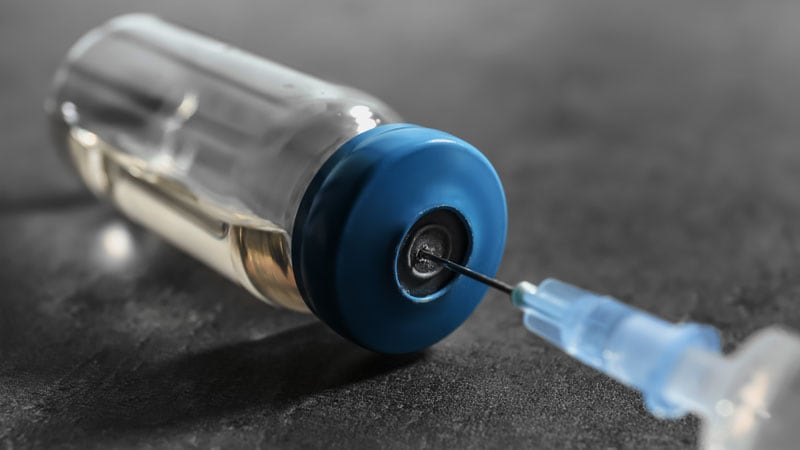Long-Term Efficacy of Hepatitis E Vaccine Demonstrated in 10-Year Study
Belangrijkste concepten
The hepatitis E vaccine has demonstrated sustained protection against hepatitis E infection for at least 10 years, with high vaccine efficacy and long-lasting antibody responses.
Samenvatting
The content discusses the results of a 10-year follow-up study on the efficacy and durability of the Hecolin hepatitis E vaccine. Key highlights:
The study was an extension of a previous phase 3 clinical trial conducted in China, with a total of 97,356 participants in the per-protocol population.
During the 10-year study period, the vaccine showed an 86.6% efficacy in preventing confirmed hepatitis E cases.
Among initially seronegative vaccinated participants, 87.3% in one region and 73% in another region maintained detectable antibody levels after 8.5 and 7.5 years, respectively.
The study identified some breakthrough infections even after vaccination, highlighting the importance of exploring various vaccination strategies to optimize protection.
Limitations of the study include lack of data on deaths and emigrations, single-center design, predominance of genotype 4 infections, and potential bias in the external control cohort.
The findings provide compelling evidence of the long-term efficacy of the hepatitis E vaccine and support the need for further global trials, investigation into the impact of natural infections on vaccine-induced antibodies, and confirmation of inter-genotypic protection.
Hepatitis E Vaccine Shows Long-Term Efficacy
Statistieken
During the 10-year study period, there were 13 hepatitis E cases in the vaccine group (0.2 per 10,000 person-years) and 77 cases in the placebo group (1.4 per 10,000 person-years).
87.3% of initially seronegative vaccinated participants in Qingdao maintained detectable antibody concentrations after 8.5 years.
73.0% of initially seronegative vaccinated participants in Anfeng maintained detectable antibody concentrations after 7.5 years.
Citaten
"The observation of higher IgG antibody avidity in participants with infections despite vaccination underscores the importance of robust antibody responses to mitigate disease severity and duration."
"The remarkable efficacy (100%) observed over a 30-month period for the two-dose schedule (doses are administered 1 month apart) is promising."
Belangrijkste Inzichten Gedestilleerd Uit
by Dr Alessia M... om www.medscape.com 04-08-2024
https://www.medscape.com/viewarticle/hepatitis-e-vaccine-shows-long-term-efficacy-2024a10006m1
Diepere vragen
What factors may contribute to the observed decline in antibody levels over time, and how can vaccination strategies be optimized to maintain long-term protection?
The observed decline in antibody levels over time can be attributed to various factors. One key factor is the waning of immune memory, where the body's immune response weakens over time after vaccination. This decline in antibody levels may result from the natural decay of antibody-producing cells or a decrease in the production of antibodies over time. Additionally, external factors such as exposure to new strains of the virus or changes in the virus itself can impact the long-term efficacy of the vaccine.
To optimize vaccination strategies and maintain long-term protection, several approaches can be considered. One strategy is the use of booster doses to reinforce the immune response and sustain antibody levels over time. Implementing a vaccination schedule that includes periodic booster shots can help enhance and prolong immunity against hepatitis E. Furthermore, research into novel vaccine formulations or adjuvants that can elicit a more robust and durable immune response may also be beneficial in maintaining long-term protection.
How do the findings of this study compare to the efficacy and durability of other licensed hepatitis E vaccines, and what are the implications for global hepatitis E prevention efforts?
The findings of this study demonstrate the long-term efficacy and durability of the Hecolin hepatitis E vaccine, with sustained protection observed over a decade. This is a significant advancement compared to other licensed hepatitis E vaccines, as it provides evidence of lasting immunity against the virus. The high vaccine efficacy rate of 86.6% in preventing hepatitis E infections highlights the effectiveness of the vaccine in reducing the burden of the disease.
These findings have important implications for global hepatitis E prevention efforts. The success of the Hecolin vaccine in providing long-term protection underscores the potential impact of widespread vaccination campaigns in reducing the incidence of hepatitis E worldwide. By implementing vaccination programs that prioritize the use of effective and durable vaccines, public health authorities can make significant strides in controlling and preventing hepatitis E infections on a global scale.
Given the limitations of this single-center study, what additional research is needed to fully understand the long-term impact of the hepatitis E vaccine across diverse populations and genotypes?
While the findings of this study are promising, additional research is needed to comprehensively assess the long-term impact of the hepatitis E vaccine across diverse populations and genotypes. One crucial area for further investigation is the evaluation of vaccine efficacy in populations outside of China to determine the generalizability of the results. Conducting multi-center studies in different regions with varying levels of hepatitis E prevalence can provide a more comprehensive understanding of the vaccine's effectiveness in diverse populations.
Furthermore, research focusing on the impact of different hepatitis E genotypes on vaccine-induced immunity is essential. Given the genetic diversity of the virus, studying the vaccine's efficacy against various genotypes can help determine its cross-protective capabilities. Additionally, long-term surveillance studies that track antibody levels and breakthrough infections over extended periods can offer insights into the durability of vaccine-induced immunity and potential strategies for enhancing long-term protection against hepatitis E.
0
